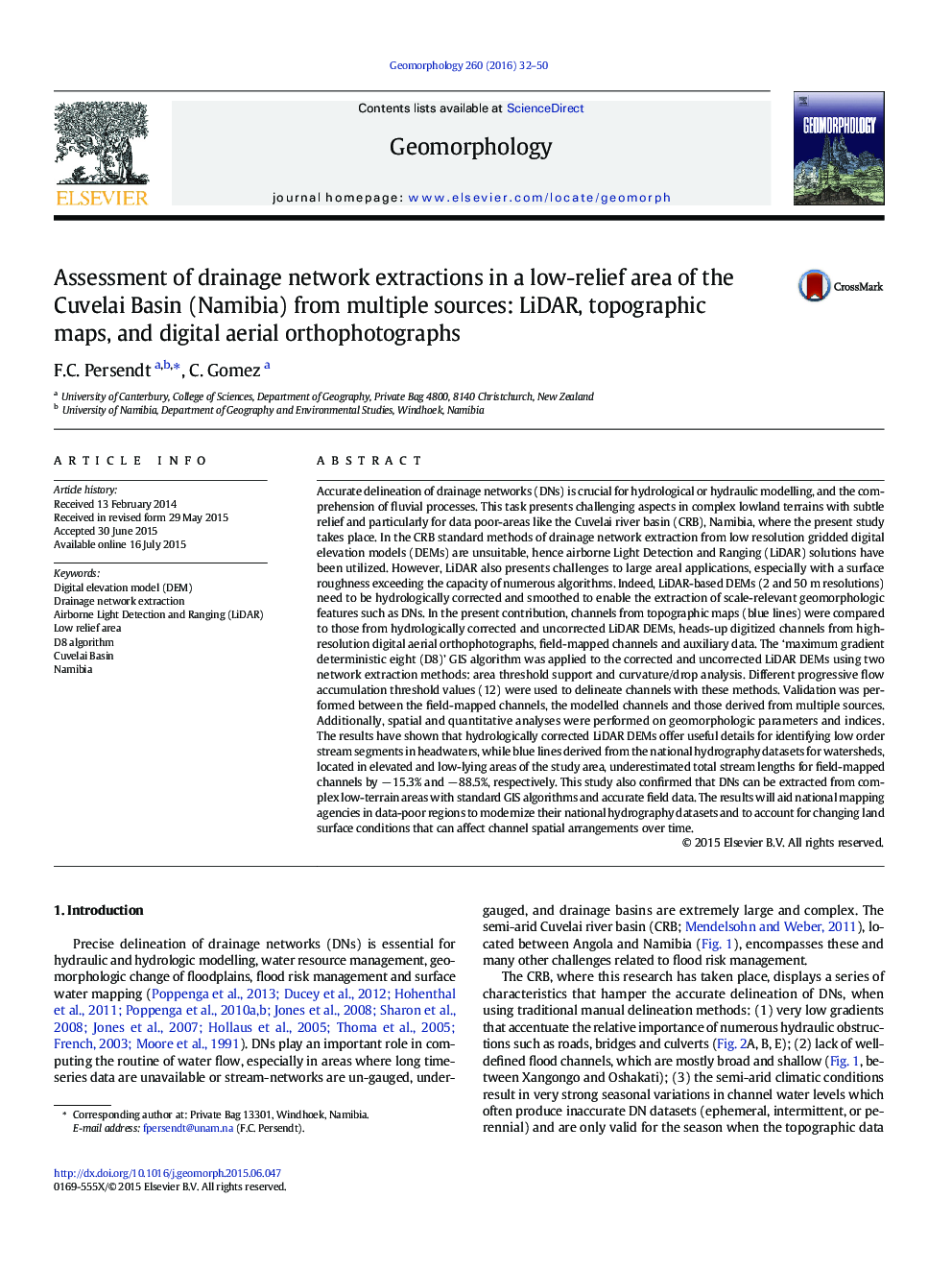| Article ID | Journal | Published Year | Pages | File Type |
|---|---|---|---|---|
| 4684085 | Geomorphology | 2016 | 19 Pages |
•Assessment of extractions of digital drainage networks in low-relief landforms from multiple data sources using standard GIS-based flow-accumulation algorithms•Extraction of drainage networks from corrected and uncorrected high resolution LiDAR DEMs using area threshold and curvature/drop analysis methods with different flow accumulation threshold values•Comparison of field-mapped drainage network to the ones modelled and extracted from orthophotographs, topographic maps and other auxiliary data using spatial analyses of geomorphologic indices and parameters.•We found that “hydrologically corrected” LiDAR can produce accurate drainage networks similar to field-mapped networks but more accurate than blue lines derived from the national topographic maps.
Accurate delineation of drainage networks (DNs) is crucial for hydrological or hydraulic modelling, and the comprehension of fluvial processes. This task presents challenging aspects in complex lowland terrains with subtle relief and particularly for data poor-areas like the Cuvelai river basin (CRB), Namibia, where the present study takes place. In the CRB standard methods of drainage network extraction from low resolution gridded digital elevation models (DEMs) are unsuitable, hence airborne Light Detection and Ranging (LiDAR) solutions have been utilized. However, LiDAR also presents challenges to large areal applications, especially with a surface roughness exceeding the capacity of numerous algorithms. Indeed, LiDAR-based DEMs (2 and 50 m resolutions) need to be hydrologically corrected and smoothed to enable the extraction of scale-relevant geomorphologic features such as DNs. In the present contribution, channels from topographic maps (blue lines) were compared to those from hydrologically corrected and uncorrected LiDAR DEMs, heads-up digitized channels from high-resolution digital aerial orthophotographs, field-mapped channels and auxiliary data. The ‘maximum gradient deterministic eight (D8)’ GIS algorithm was applied to the corrected and uncorrected LiDAR DEMs using two network extraction methods: area threshold support and curvature/drop analysis. Different progressive flow accumulation threshold values (12) were used to delineate channels with these methods. Validation was performed between the field-mapped channels, the modelled channels and those derived from multiple sources. Additionally, spatial and quantitative analyses were performed on geomorphologic parameters and indices. The results have shown that hydrologically corrected LiDAR DEMs offer useful details for identifying low order stream segments in headwaters, while blue lines derived from the national hydrography datasets for watersheds, located in elevated and low-lying areas of the study area, underestimated total stream lengths for field-mapped channels by − 15.3% and − 88.5%, respectively. This study also confirmed that DNs can be extracted from complex low-terrain areas with standard GIS algorithms and accurate field data. The results will aid national mapping agencies in data-poor regions to modernize their national hydrography datasets and to account for changing land surface conditions that can affect channel spatial arrangements over time.
